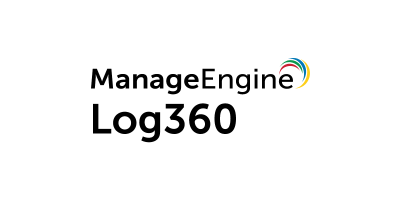Clearly, both of these solutions, IBM QRadar and Splunk, address a growing market demand for cybersecurity. There is no shortage of challenges facing cybersecurity teams: an increase in the volume and sophistication of cyberattacks, an explosion of data, an expanding attack surface, disjointed security tools and a shortage of skilled security staff.
Both QRadar and Splunk are leaders in the Security Information and Event Management (SIEM) space. Both offer broad monitoring and analytics of security incidents, potential threats, and analysis of logs.
Buyers looking for a general SIEM platform are likely to find both on their list of strong candidates. Overall, though, there are plenty of differences that will matter greatly to buyers with different goals in mind. Here’s a look at both SIEM tools, and how they compare.
Also see: Secure Access Service Edge: Big Benefits, Big Challenges
QRadar vs. Splunk: Key Feature Comparison
The Splunk platform encompasses searching, monitoring, and analyzing of a vast amount of IT data to identify data patterns, provide metrics, diagnose problems and aid in business and IT decision making.
To understand the scope of Splunk: SIEM can be considered just one small part of its feature arsenal. Beyond security, it takes in Application Performance Monitoring (APM), compliance, automation, orchestration, forensics, as well as plenty of features related to IT service management (ITSM) and IT operations management (ITOM).
Splunk’s wide range of products and features are aggregated within the Splunk Observability Suite. The platform can be used to analyze, ingest, and store data for later use, as well as detect issues impacting customers. Overall, it offers a breadth of management. Those wishing to manage SIEM, ITOM and ITSM in an integrated fashion will find Splunk to be a fine tool to do the job. It offers a wealth of real-time visualization and analysis features, as well as management and monitoring.
QRadar is a SIEM solution that defends against threats while scaling security operations through integrated visibility, detection, investigation, and response. It provides security teams with centralized visibility into enterprise-wide security data and actionable insights into the highest priority threats.
Security analysts can work from one pane of glass in QRadar to quickly understand their security posture, identify the most critical threats, and drill down to get more details, helping to streamline workflows and eliminate the need to pivot between tools. Its anomaly detection capability helps to reduce events to a prioritized list of the most important alerts. It leverages automated, advanced analytics and threat intelligence to speed investigation time.
Splunk represents itself as a complete platform to handle everything related to SIEM, security and ITOM. It ventures far beyond SIEM. QRadar is more tightly focused on SIEM and overall security. Your existing stack of security and management tools, therefore, should be considered before deciding between Splunk and IBM. Those with outdated tools that are in need of a complete overhaul should probably gravitate to Splunk due to its much wider feature set. Why buy five different management tools when you can buy one from Splunk and have them all integrated?
But where Splunk goes wider, IBM goes deeper on the security side. As it is built on IBM Cloud Pak for Security, the open architecture of QRadar provides a great many additional and fully integrated security capabilities that save time enriching, correlating, and investigating threats. Artificial intelligence, pre-built playbooks, automatic root-cause analysis, and MITRE ATT&CK mapping are all part of the package. This can help to greatly improve the speed of investigation.
On security features, IBM wins.
QRadar vs. Splunk: Comparing Implementation and Ease of Use
One potential challenge with QRadar is the size and scope of IBM. There are so many tools and capabilities available within the vast scope of IBM that sometimes products get lost. That said, IBM is investing a lot in QRadar so it appears it won’t suffer the same fate of other “lesser” IBM tools.
On implementation, a large collection of templates make the job of implementing the platform straightforward, relative to the typical SIEM deployment. Thus, users tend to report a shorter learning curve on QRadar than Splunk.
As for ease of use, Splunk gets the nod. Some users consider the UI of QRadar a little clunky and dated. Splunk, being a newer platform, looks more modern.
Splunk wins on ease of use; IBM on ease of implementation.
QRadar vs. Splunk: Comparing Cloud and On-Premises
Splunk was born and raised in the cloud. It does not offer on-premises appliances but provides software for on-site deployment if desired. But most use it in the cloud.
IBM has gone to great lengths over the past decade to shed its old school on-premises reputation. Its CloudPak initiative has QRadar available either in the cloud or on-premises. That said, Splunk still wins in the cloud and QRadar wins for on-premises. Splunk can be installed directly through the cloud onto a public, private, or hybrid cloud setting. IBM, too, can provide cloud-based SIEM.
QRadar vs. Splunk: Integration Comparison
A big strength of Splunk and a key differentiator is its ability to integrate data streams from a huge number of sources. Some users ingest several PB per day. It supports a wide range of data formats like.xml, .csv and .json file. Those with needs that require such data stream integration from multiple data formats should opt for Splunk, as it offers over 1,000 add-on applications in its app store. It also heads a coalition of 30 partners on security collaboration.
QRadar integrates very well with a great many IBM products and especially with the many security tools that fall under the QRadar umbrella. A large, open ecosystem integrates EDR, SIEM, NDR, security orchestration and response (SOAR) and threat intelligence solutions. But integrations beyond the IBM world are limited.
Splunk wins on integration.
Also see: Best Website Scanners
QRadar vs. Splunk: Comparing Analytics and Search
Splunk is all about monitoring and analyzing data generated from various machines. It is great for analyzing the huge number of log files generated by enterprise systems. Splunk eliminates the need for IT to spend hours trawling through all the logs looking for that performance needle in the IT haystack. It makes use of the search processing language to find terms present in log files. For example, Splunk offers a wealth of real-time visualization and analysis features. If real-time management and monitoring are vital, then this one is a no contest. But it does come at a price.
QRadar, however, benefits from IBM’s long-term leadership in Artificial Intelligence – this is a major advantage. It can tap into IBM Watson and other IBM analytic capabilities for threat identification and analysis. This also adds a greater level of automation to SIEM.
IBM wins on analytics.
How Do QRadar and Splunk Prices Compare?
Neither Splunk nor QRadar come cheap. The various modules within Splunk have a reputation for being expensive. Further, upselling can send the budget much higher. If you need performance monitoring – that adds in an APM module, and slowly other modules creep in and the price tag rises. This is normal enough in IT. But when you are already dealing with a pricey platform, it is important to determine what you really need and what you can dispense with.
QRadar is also expensive. Perpetual licenses are available with general licensing done based on the number of events and flows received in the event collector. Those who are already partners or significant users of IBM products and services benefit from considerable package discounts.
Splunk prefers to price based on the maximum daily data volume. Thus, the most economic platform will vary from enterprise to enterprise based on how the workloads run and performance/data patterns.
Should You Choose QRadar or Splunk?
Splunk and QRadar are both excellent tools designed to solve a great many challenges related to security and performance monitoring. You can’t go wrong too far wrong with either one. Both are strong in SIEM. User ratings overall from a variety of IT review sites show little difference in rating between Splunk and QRadar. Both are regarded as leaders in the latest Gartner SIEM Magic Quadrant.
Splunk is a much broader platform and toolset that proves invaluable in rapidly analyzing log files and making sense of mountains of data so IT knows what is going on, and it encompasses a far wider range than just security. Whether it’s a performance slowdown or a security incursion, Splunk is a good way to stay one step ahead of trouble. QRadar can rival Splunk on many features directly related to SIEM, but it provides a much deeper set of integrated security tools.
In the end it comes down to needs. Those wanting an all-encompassing security and IT management platform will find Splunk closer to their needs. Additionally, those with aging applications that are ready for a major management makeover will find Splunk a good fit. It covers a large amount of ground.
But if it is only SIEM that is needed, the equation shifts. QRadar wins on many fronts, and offers a great many other security bells and whistles, too. And those invested in the IBM universe should likely not look beyond QRadar.
Featured Partners: SIEM Software
ManageEngine Log360
Log360 is a SIEM solution that helps combat threats on premises, in the cloud, or in a hybrid environment. It also helps organizations adhere to several compliance mandates. You can customize the solution to cater to your unique use cases.
It offers real-time log collection, analysis, correlation, alerting and archiving abilities. You can monitor activities that occur in your Active Directory, network devices, employee workstations, file servers, Microsoft 365 and more. Try free for 30 days!
Graylog
Graylog is a log management and SIEM that is easier, faster, more affordable than most solutions. It is a scalable, flexible cybersecurity platform that combines SIEM, security analytics, industry-leading anomaly detection capabilities with machine learning that adapts to your environment and grows with your business. Built by practitioners for practitioners, Graylog Security flips the traditional SIEM application on its head by stripping out the complexity, alert noise, and high costs.


